Key Takeaways
- Lido is a liquid staking platform that enables you to earn passive income while maintaining the flexibility to participate in various DeFi activities;
- When you stake with Lido, you receive stETH tokens, which can be traded, lent, or used just like regular ETH;
- The Lido staking platform has no lock-up periods or minimum deposit requirements.
Stop overpaying - start transferring money with Ogvio. Sign up, invite friends & grab Rewards now! 🎁
Wouldn't it be awesome to unlock passive income opportunities from your crypto holdings? If that's the goal, Lido staking offers a compelling solution. Instead of letting your assets gather dust in your wallet, Lido allows you to earn various rewards by putting them to work.
Lido operates through an innovative and robust staking system. By contributing your crypto assets to a pool, you'll support the operation of PoS blockchains, like Ethereum, while earning rewards.
Before you make your idle assets work and start earning, make sure your crypto is stored in a secure digital wallet, like Ledger Nano X. Once you've got your digital holdings safe and sound, let’s start learning how to stake them using Lido.

Did you know?
Subscribe - We publish new crypto explainer videos every week!
Copy Trading Guide for Beginners (ANIMATED EXAMPLES)


Table of Contents
- 1. Lido Liquid Staking Explained
- 1.1. What is Liquid Staking?
- 1.2. What is Lido?
- 2. How Does Lido ETH Staking Work?
- 2.1. Pooling Protocol
- 2.2. The stETH and wstETH Tokens
- 3. How to Stake ETH on Lido
- 4. How to Unstake ETH on Lido
- 5. Lido Liquid Staking: Benefits and Risks
- 5.1. Lido Staking Benefits
- 5.2. Lido Staking Risks
- 6. Best Practices for Secure Lido ETH Staking
- 7. Conclusions
Lido Liquid Staking Explained
Before diving deeper into Lido staking, let's start with the basics. While staking is well-known in the crypto world, 'liquid staking' might be new to some. Let's explore what liquid staking entails and how it differs from traditional methods.
Latest Deal Active Right Now:What is Liquid Staking?
Staking involves locking up your cryptocurrency holdings to support the operations of a blockchain network. By staking your assets, you contribute to transaction validation of a Proof-of-Stake (PoS) blockchain network[1]. In return, you receive staking rewards through coins or tokens.
However, traditional staking has its drawbacks. Once you stake your cryptocurrency, it becomes locked up for a specific period, making it inaccessible. This lack of liquidity leads to capital inefficiency, especially in Decentralized Finance (DeFi)[2], where flexibility with your assets is important.
That's where liquid staking comes in. Liquid staking allows you to receive a transferable utility token representing the value of your staked assets.

These 'liquid' assets can be freely used within the crypto ecosystem. You can trade them, use them as collateral, or utilize them in other financial activities across the networks.
Liquid staking is a significant upgrade to traditional staking, providing greater accessibility and flexibility. It allows you to generate additional income and maximize financial gains while actively engaging with the broader cryptocurrency ecosystem.
What is Lido?
Launched in December 2020, Lido has emerged as a prominent platform in the liquid staking space. Their goal is to simplify and decentralize staking, making it accessible to a broader audience. Initially designed for ETH, Lido staking now supports other cryptos like Solana, Kusama, Polygon, and Polkadot.
Lido also launched a decentralized autonomous organization (DAO) to facilitate decentralized protocol governance. This body oversees key protocol decisions to ensure alignment with stakeholders' interests while maintaining decentralization and transparency.
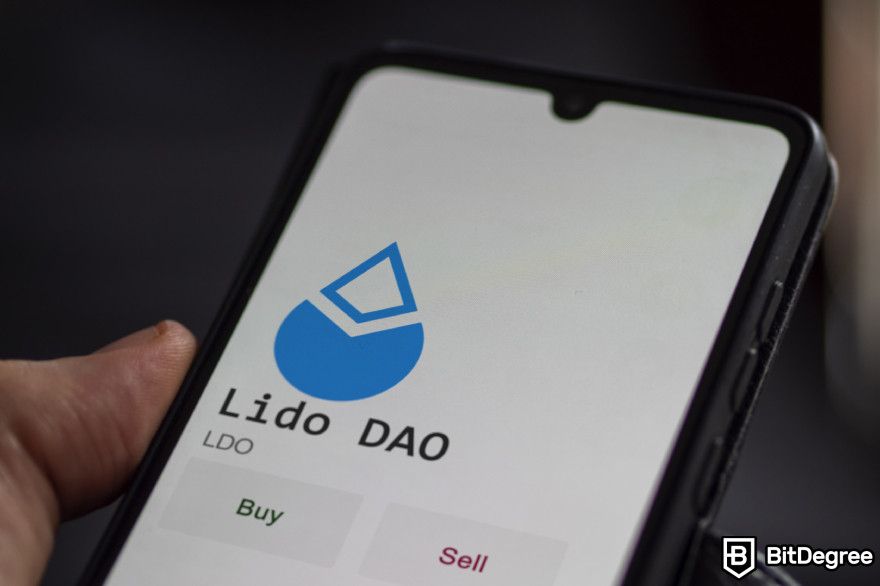
The Lido DAO distributes governance rights through its native token (LDO), each representing one vote. Voting power is proportional to each holder's stake in the network.
A distinctive feature of Lido is its flexible voting mechanism, which can be independently upgraded and adjusted. This adaptability allows the Lido DAO to evolve its governance structure without affecting other protocol functions, ensuring the platform's resilience and responsiveness.
Lido stands out in the staking space by combining community-driven governance with adaptable infrastructure. The DAO, supported by a flexible voting mechanism, ensures that the Lido staking platform prioritizes user needs and can swiftly adjust to the ever-changing blockchain landscape.
How Does Lido ETH Staking Work?
Lido staking offers a unique approach to participating in Proof-of-Stake (PoS) networks like Ethereum. It removes the barrier of entry for individual investors and unlocks the potential for passive income. Let's break down the core mechanics.
Pooling Protocol
Traditionally, becoming a validator on the Ethereum network demands a hefty investment of at least 32 ETH. This requirement currently amounts to approximately $83,800, a significant sum for most people!
Lido eliminates this barrier by utilizing a pooling mechanism. When you deposit your ETH into Lido, it gets combined with contributions from other users. This pooled ETH is then used to participate in staking on the Ethereum network through a secure smart contract.
It’s a self-executing program that automates various key tasks. In staking, the program manages functions like transactions, staking reward calculations, and security[3].
This pool protocol boosts security and stability by spreading the staked ETH across multiple validators. If one validator goes offline or encounters an issue, the other active validators in the pool keep everything secure, protecting your potential rewards.
This approach minimizes the risk of a single point of failure and helps users maximize Lido staking rewards.
Lido liquid staking democratizes the process of participating in blockchain security and earning rewards. Regardless of their initial investment amount, it allows anyone to contribute to the network and benefit from the PoS model.
The stETH and wstETH Tokens
One of the best things about Lido ETH staking is its flexibility. Unlike traditional staking, which locks up your crypto for a set period, Lido lets you keep your staked Ethereum assets. These assets come in the form of tokens called stETH (staked ETH).
Here's how it works: You deposit your ETH to be staked and immediately receive stETH tokens in return. These tokens represent your underlying ETH, which is actively generating staking rewards.
The true strength of stETH lies in its versatility. You can use stETH just like regular ETH, meaning you can trade it, lend it, or even use it on various DeFi platforms. This versatility opens doors to new ways of earning income from your staked assets.
However, there's a slight catch with stETH's flexibility. While stETH works well with some DeFi protocols, its core feature can sometimes lead to compatibility issues.
Lido uses a system where the amount of stETH in your balance changes daily due to staking rewards. This token type is called a 'rebaseable token' because its total supply automatically adjusts based on price fluctuations.

While the rebase feature works flawlessly with integrated DeFi platforms, like Curve and Yearn, it can cause problems with others.
Platforms like Uniswap, 1inch, and SushiSwap aren't designed for rebasable tokens. If you provide stETH as liquidity on these platforms, you might lose out on some of your daily Lido staking rewards because of the rebase mechanism. This is where wstETH (wrapped stETH) comes into play.
When you wrap your stETH into wstETH, you ensure stability. This transformation converts your fluctuating stETH balance into a fixed amount of wstETH tokens.
Instead of daily updates, wstETH uses an underlying share system to track your staking rewards behind the scenes. This ensures a stable balance for DeFi interactions while your rewards continue to accumulate.
By enabling seamless integration across the DeFi ecosystem, wstETH unlocks the full potential of stETH in many Ethereum-based protocols. It allows you to leverage your staked ETH for a broader range of DeFi activities without worrying about compatibility issues or losing out on potential rewards.
How to Stake ETH on Lido
So, we've talked about the basics of the Lido staking platform. Now, if you're curious about how to do it and start earning, here's an easy step-by-step guide to help you get started.
First, you need a secure and reliable wallet. While various wallet options exist, this guide will utilize the benefits of Ledger wallets for staking.
Ledger’s hardware wallets enhance digital asset security by keeping crypto offline. This method significantly lowers the risk of cyberattacks, providing a more secure option for protecting assets.
Step 1: You'll need to have a Ledger wallet and the Ledger Live app set. Once you have that, go to your Ledger Live app and install the Ethereum app.
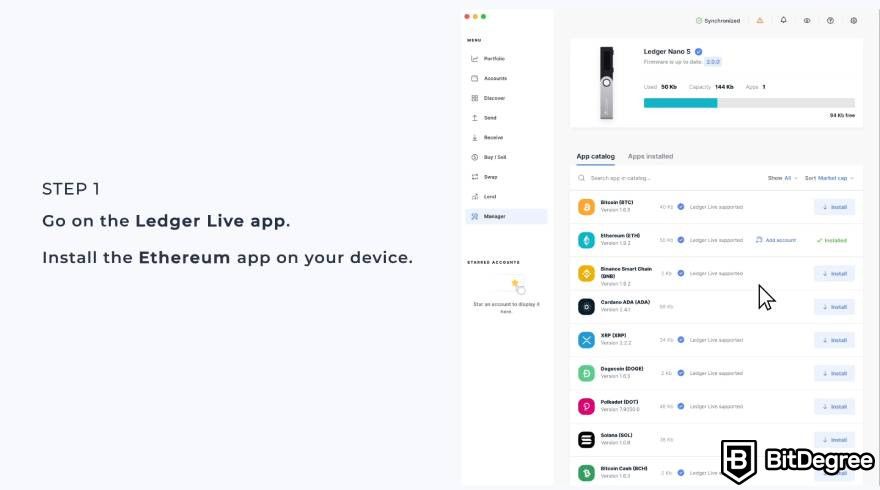
Step 2: After you install and launch the app, you need to create an Ethereum account. To do this, find 'Ethereum (ETH)' in the 'App Catalog' tab and click [Add Account]. When prompted, click [Continue] to start the synchronization process. Once it finishes, click [Add Account] and then [Done].
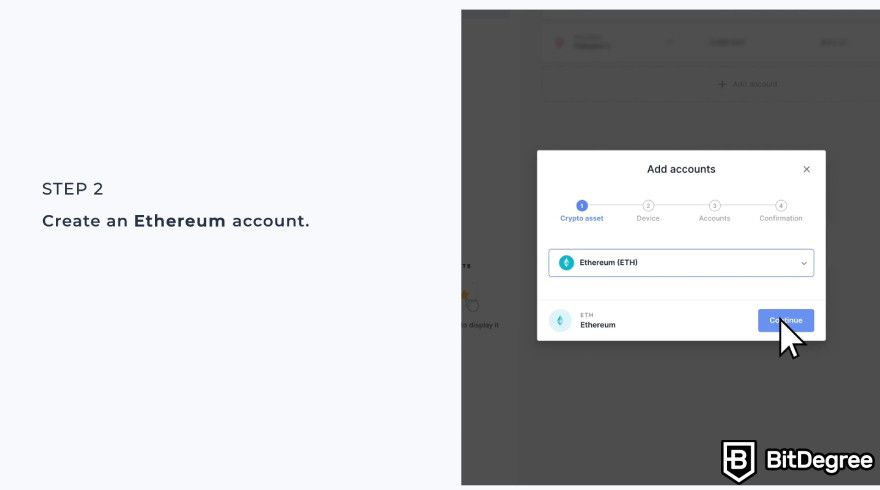
Step 3: Go to the 'Discover' tab in the Ledger Live menu on the left and select [Lido] to install the platform.
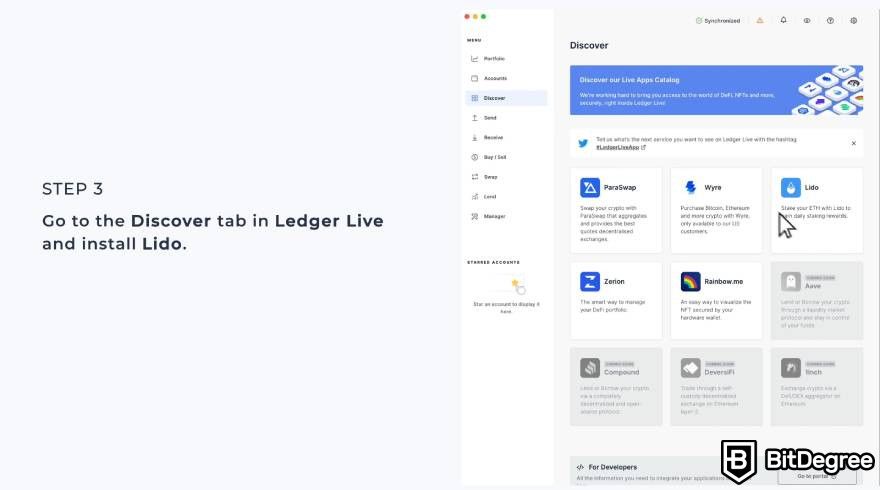
Step 4: Once at the Lido staking page in Ledger Live, input the amount of ETH you want to stake and select [Submit].

Step 5: When prompted, select your preferred fees and click [Continue].
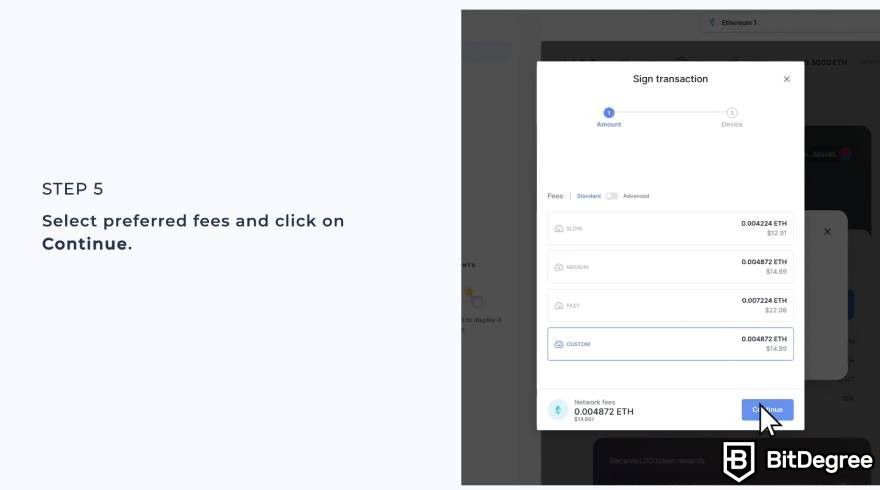
Step 6: Sign the transaction using your Ledger device and wait for the process to complete.
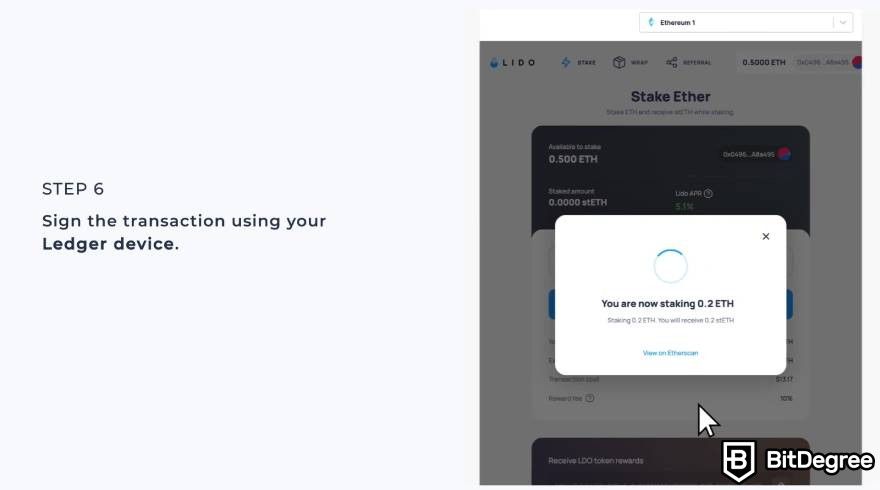
Congratulations! You've successfully staked your ETH using the Lido liquid staking platform. Your stETH balance will automatically increase, reflecting your rewards for contributing to the network ecosystem.
As of writing, Lido ETH staking annual percentage rate (APR) stands at 3.21%. This rate is dynamic and changes depending on the network’s staking rewards.
There's also a 10% fee applied to your Lido staking rewards to support node operators and the DAO treasury. While this fee reduces your overall earnings, it helps ensure the smooth operation and development of the Lido staking platform.
How to Unstake ETH on Lido
If you need your coins back, don’t worry—Lido staking keeps your ETH accessible. This means you can withdraw or “unstake” your holdings whenever you like. Here’s a simple guide to walk you through the process:
Step 1: Head to the Lido withdrawal tab and connect your wallet.
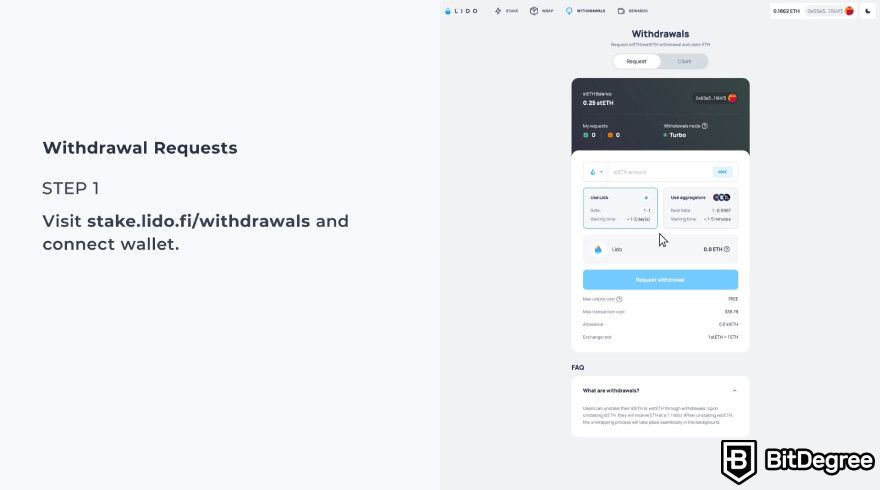
Step 2: On the withdrawals section, change the token to stETH, choose the amount to withdraw, and select [Request withdrawal].
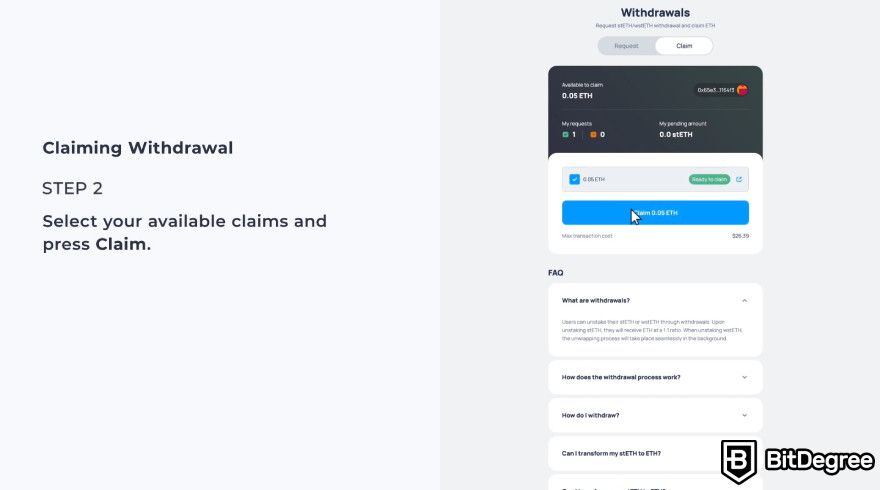
Step 3: Sign and confirm the withdrawal transaction when prompted.
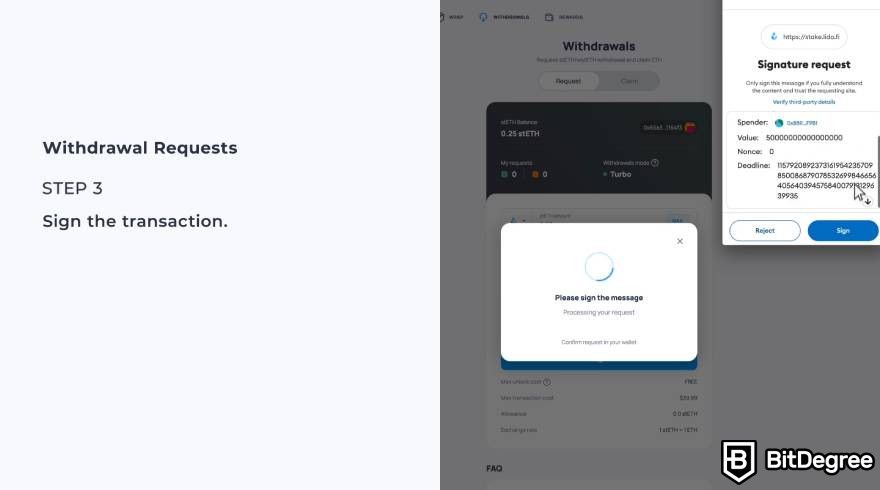
Typically, the process takes 1 to 5 business days to complete. However, using aggregators allows you to access your ETH within minutes. This method bypasses the Lido withdrawal queue, though it may affect your ETH price depending on the size of your transaction.
Lido Liquid Staking: Benefits and Risks
Up to this point, I’ve essentially covered everything you need to know about the Lido staking. So, let’s talk about its benefits and risks to help you make a well-calculated decision before investing your assets.

Did you know?
Subscribe - We publish new crypto explainer videos every week!
What is VeChain? VeChain Coin Explainer (ANIMATED)


Lido Staking Benefits
Lido staking rewards users with more than just yields; it provides several advantages and new opportunities to maximize your income. Here are some of the potential benefits you can reap:
- Constant Liquidity with stETH
Traditional staking usually involves locking up your assets for extended periods, but Lido offers a different approach. Using the Lido staking platform, you’ll receive stETH in exchange for your deposited ETH.
You can transfer it to others or swap them on exchanges, just like regular ETH. This flexibility means you're not tied to your staking position and can access your funds whenever needed.
- DeFi Participation
Staking with Lido allows you to explore the exciting world of DeFi. Using your stETH as a building block, you can interact with various DeFi protocols.

Imagine your ETH is busy earning staking rewards while you also leverage your stETH to participate in different DeFi activities. This approach allows you to maximize the earning potential of your crypto holdings, giving you the best of both worlds.
- Decentralized Decision-Making
Lido uses a unique approach to governance. Unlike traditional platforms, where one entity makes all the decisions, this structure lets the community take charge.
Every LDO token holder actively participates in shaping the protocol's future. Community votes decide everything, from adjusting fees to implementing upgrades. This approach keeps everything transparent and gives everyone a chance to get involved.
- Skilled Node Operators
Lido understands how crucial network security is, so they partner with trusted node operators who handle the technical side of things. These experts keep the network running smoothly and prevent potential issues.
By partnering with these skilled experts, Lido significantly reduces the likelihood of technical errors that could result in penalties or loss of funds. You provide the stake, and these operators offer the know-how, helping to address any question you might have, like “Is Lido staking safe?”.

Ultimately, Lido staking offers a compelling combination of reliability and flexibility. You can earn staking rewards while simultaneously using your stETH tokens to participate in various DeFi applications, maximizing the potential of your crypto holdings.
- Restaking Opportunities
Restaking is a method to potentially maximize returns on your staked cryptocurrency holdings. In simpler terms, you can take your existing staked tokens and "re-stake" them to earn additional rewards. By doing this, you're providing even more security to the network and qualifying for extra incentives.
Some platforms designed for restaking offer special tokens called liquid restaking tokens (LRTs). These LRTs act like a receipt for your original staked assets, allowing you to trade or use them elsewhere while still earning rewards.
Keep in mind that restaking is a relatively new concept, so it's crucial to do your research before diving in. Carefully evaluate how different restaking platforms work and understand their associated risks before committing your crypto.

- Secure and reliable
- Accepts fiat currencies
- Lots of trading options
- Reputable exchange
- Accepts fiat currencies
- Offers various trading options

- Huge trading variety
- Regulation-compliant around the globe
- Fair trading fees
- Beginner-friendly
- A wide array of features
- Vast number of different crypto coins & tokens

- Beginner-friendly
- Secure
- Decent trading and withdrawal fees
- Crypto.com Visa Card
- Automated tools & bots
- Ecosystem synergy with CRO
Lido Staking Risks
Although Lido staking offers a range of benefits, it’s crucial to be aware of the potential downsides. Here’s a breakdown of some key risks to consider:
- Smart Contract Security Risks
Lido staking platform uses smart contracts to automate tasks on the blockchain. While these contracts streamline the process, they are still software and can have vulnerabilities.
One particular vulnerability involves reentrancy attacks, which occur when a function in a contract makes an external call to a malicious contract without properly accounting for the potential for reentrant calls. This type of attack can result in unexpected issues and enable the attacker to manipulate the contract's state or siphon off its funds.
Lido has implemented several strategies to address the "Is Lido staking safe against smart contract vulnerabilities?" concern.

First, Lido’s open-source code allows experts to check for vulnerabilities and invites the broader security community to contribute. This openness can also foster a collaborative environment where the wider security community can contribute to the platform's safety.
Building on this transparency, Lido runs a substantial bug bounty program. This program incentivizes white hat hackers to identify and report any issues they find in the code.
Lastly, Lido hires independent security experts to conduct regular smart contract audits. These thorough checks add another layer of scrutiny, ensuring that any vulnerabilities are addressed promptly.
- Slashing Risks
When you participate in Lido staking, you essentially delegate your ETH to validators. Their task is to secure the network by following the established rules.
However, there’s a risk involved: If a validator makes a mistake or goes offline for too long, they can face penalties known as “slashing”. In the worst case, this penalty could result in losing some or all of your staked ETH.

Lido mitigates this by applying a multi-validator strategy, like spreading your eggs across several baskets. This way, Lido distributes your ETH among multiple validators. As a result, if one validator encounters an issue, it won’t significantly impact your overall stake.
In addition, Lido collaborates with seasoned and reputable node operators who boast a strong track record of reliability. By partnering with these trusted experts, Lido mitigates the risk of slashing penalties affecting your staked ETH.
- Price Fluctuation of stETH
One crucial aspect to consider with stETH is their potential price deviation from the underlying ETH you staked. The token basically serves two main functions: a representation of the staked ETH and a tradeable asset.
This dual purpose can lead to a price difference between stETH and ETH. Market supply and demand might cause stETH’s price to fluctuate slightly compared to its counterpart.
Lido staking provides a user-friendly way to engage in PoS and earn rewards. However, like any investment, it comes with its risks. Understanding these potential pitfalls is crucial to making an informed decision and preparing for a successful staking experience.
Best Practices for Secure Lido ETH Staking
Lido staking platforms prioritize security and have implemented measures to minimize vulnerabilities. However, for ultimate peace of mind while staking your crypto, it's important to take additional steps to secure your own device. Here are some essential security tips to consider.
Utilizing Hardware Wallet
When it comes to storing your crypto, consider using a hardware wallet. These physical devices keep your private keys offline, significantly reducing the risk of online attacks. It's like keeping your digital gold in a vault, significantly reducing the risk of hacking or phishing attacks.
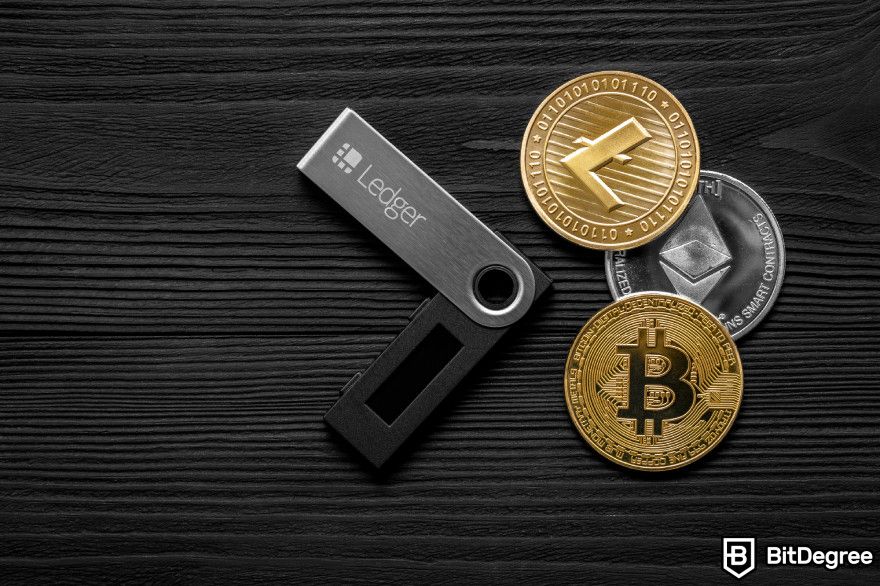
Another advantage is the increased user control. Using a hardware wallet, you retain complete control over your private keys and transactions. This eliminates the need for third-party custodians, which can present a single point of failure. By keeping control of your keys, you ensure that only you have access to your assets.
A popular choice is the Ledger Nano X, known for its ease of use, compatibility with multiple cryptocurrencies, and robust security features. These qualities make it an excellent choice for both seasoned stakers and newcomers alike.
Be Careful of Using Public Wi-Fi
Public Wi-Fi, often seen as a convenient way to connect online, is actually a potential threat to digital transactions like staking. The open nature of public Wi-Fi makes it vulnerable to anyone with malicious intent, who could be waiting to steal your information.
Using public hotspots without proper protection makes it easier for bad actors to sneak harmful software onto your device. They could inject infected ads into seemingly safe websites or even deceive you into installing counterfeit apps that record everything you type
To enhance security, always use a trusted, private internet connection when interacting with the Lido staking platform. Using a secure connection, such as your home Wi-Fi network or mobile data connection, helps create a barrier between your device and potential attackers.
Updating Your Apps Regularly
Regular updates are as essential for securing your digital assets as choosing a strong password. Related crypto-staking applications receive updates that patch software vulnerabilities. If left unaddressed, hackers can exploit these vulnerabilities to gain access to your crypto.
To avoid these threats, make it a habit to check for updates in your related software, like your crypto wallet. Downloading and installing these updates promptly is a simple task that takes just a few minutes but significantly bolsters your security.
Using Strong Passwords & 2FA
Strong passwords are your first line of defense. To ensure maximum security, avoid reusing passwords across different platforms. Consider using a password manager to generate strong, random passwords that are difficult to crack.

An extra layer of protection is two-factor authentication (2FA), which can be enabled in your account settings. It adds an extra step during the login process, typically requiring a code from your phone or email, making it much harder for unauthorized access.
Backing Up Your Private Keys
Similar to keeping a spare house key, it’s crucial to create regular backups of your private keys. These keys are like your master access code to your staked assets.
If your device is lost, damaged, or malfunctions, having a secure backup ensures you don't lose access to your holdings. Make sure to back up your keys regularly and store them in multiple secure locations, ideally offline.
Stay Vigilant Against Phishing
Always be careful of phishing! These scams often look like real emails or websites from well-known exchanges, but they're trying to steal your passwords, private keys, and other important information.
Double-check the URLs before you log in. A small mistake in the address could take you to a fake website designed to steal your information. It's best to avoid clicking on links in unexpected emails or messages.
By following these security tips, you can build a robust and secure staking environment, protecting your investments and maximizing your returns. Put these security measures in place so you won’t constantly wonder if Lido staking is safe.
Conclusions
Lido staking offers a compelling option for investors wanting to earn passive income from their ETH holdings. Unlike traditional staking methods that lock up your crypto, the platform provides a liquid staking solution.
With Lido, you receive stETH tokens that function like regular ETH, allowing you to engage in various DeFi activities seamlessly. The absence of lock-up periods or minimum deposit requirements also provides flexibility, making Lido staking an attractive choice for novice and experienced stakers.
However, if the Lido staking service fails to meet your needs, you can explore other staking opportunities on popular exchanges like Binance or Kraken. Each offers unique features and benefits that may appeal to you and better suit your staking preferences.
The content published on this website is not aimed to give any kind of financial, investment, trading, or any other form of advice. BitDegree.org does not endorse or suggest you to buy, sell or hold any kind of cryptocurrency. Before making financial investment decisions, do consult your financial advisor.
Scientific References
1. L. W. Cong, Z. He, K. Tang: ‘The tokenomics of staking’;
2. A. Tzinas, D. Zindros: ‘The principal-agent problem in liquid staking’;
3. F. Schär: ‘Decentralized finance: On blockchain- and smart contract-based financial markets’.









